

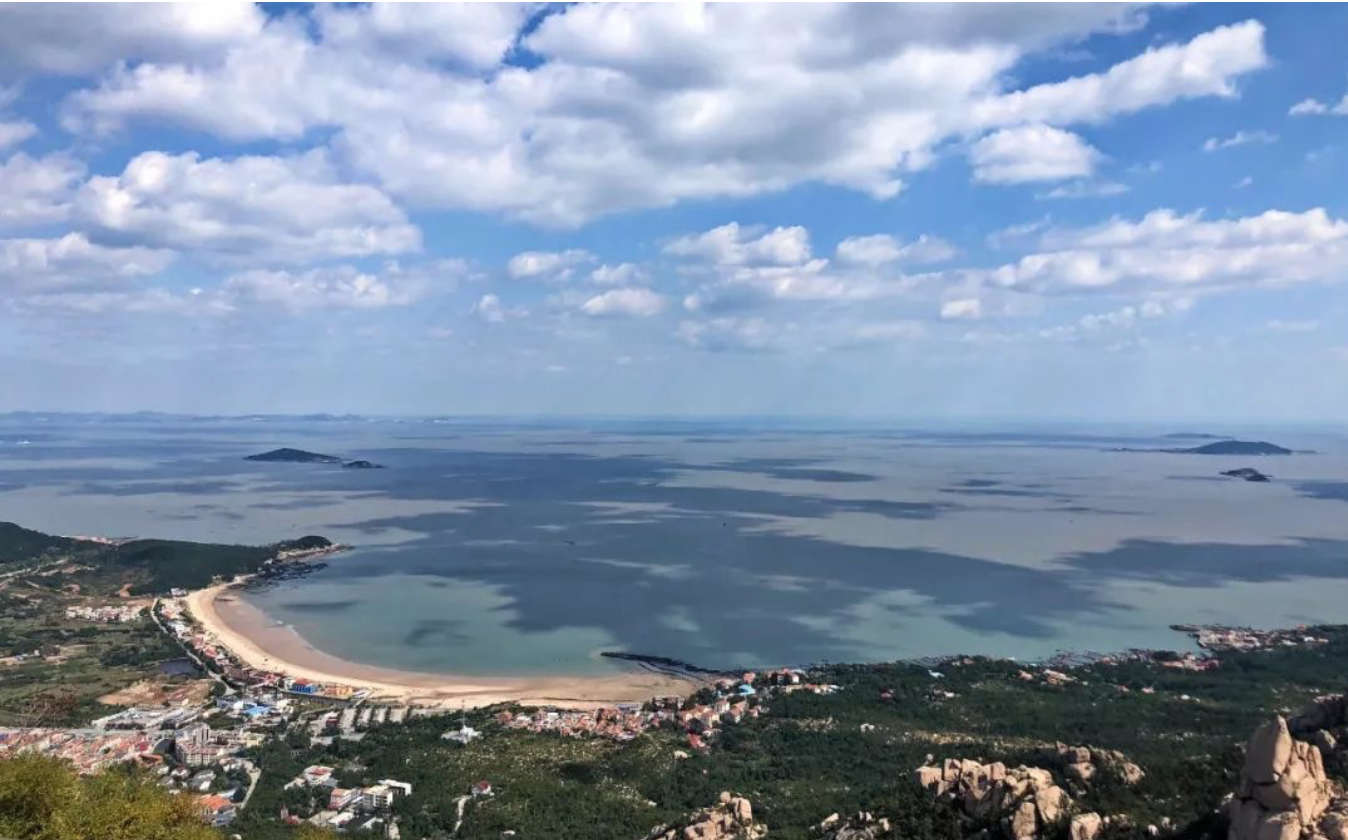
This route is themed studying nature and achieving longevity.
Yangkou scenic spot is located in the northeast of Laoshan Scenic Spot. It is backed up by the divine peaks and faced by the Yellow Sea. Its main attractions include Taiping Palace Taoist Temple and Bay Beach. With peculiar natural landscapes, rich culture and long history, Yangkou has the reputation of divine mountain and blessed spot. The scenic spot is famous for eight scenic spots: Huagai Welcoming Guests, Sea Palace, Morning Bell of Peace, Lion Peak Reaching the Sun, Julong Road Sutra, Celestial Mountain and Shouzi Peak, Heaven-seeking Cave and Tianyuan Peak. It is also famous for its role as a place of leisure, summer resort and entertainment.
Main attractions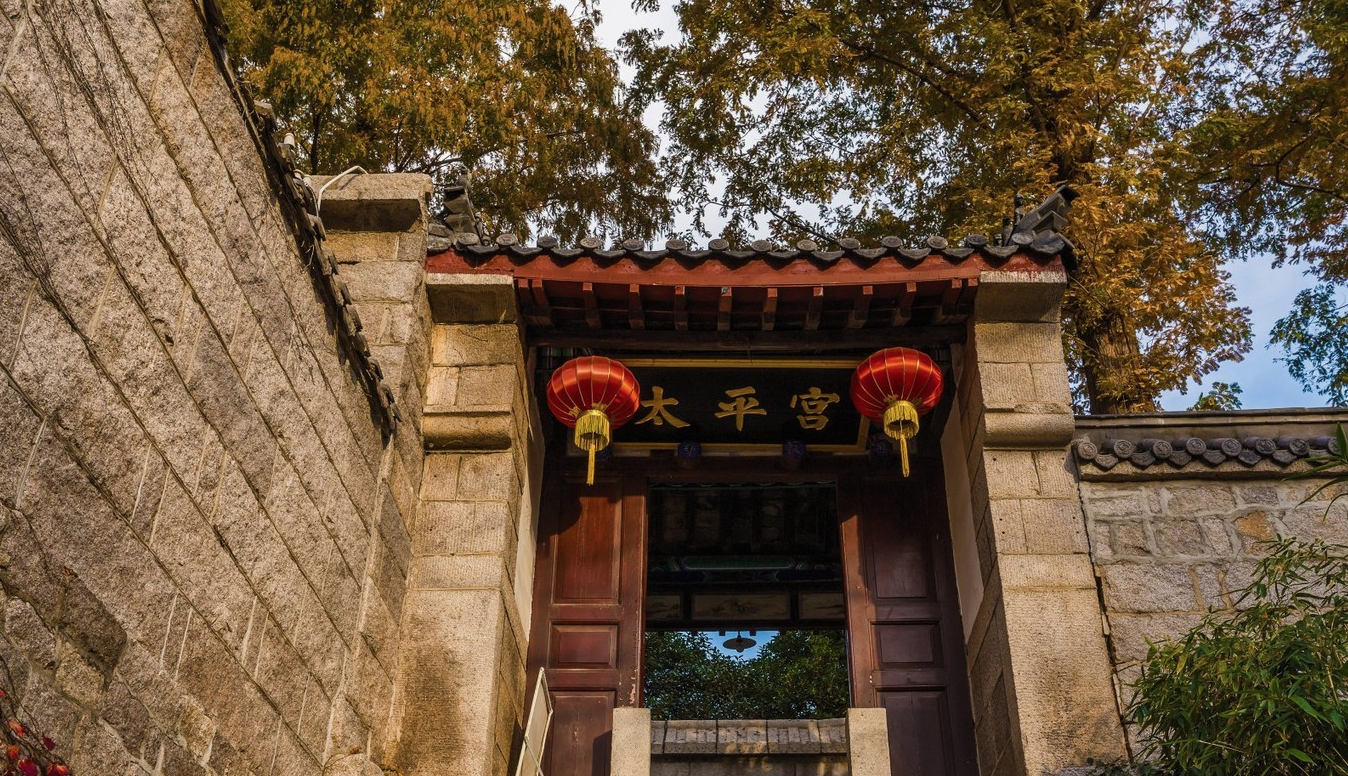
Taiping Palace: It was built in the first year of Jianlong in Song Dynasty (960 AD). It was funded by Zhao Kuangxu, the founding emperor of Song Dynasty, after he dubbed Liu Ruozhuo, a Taoist priest in Laoshan Mountain, the "Huagai Immortal". Originally named "Taiping Xingguo Court” in the hope of world peace and national prosperity, it is a treasure land for men and women to pray for good fortune. The antique bronze bell in the pavilion of the east courtyard was recast in the eighteenth year of Guangxu in Qing Dynasty. When the bell strikes in the morning, its echo lasts for quite long because of the silence in the mountains and the resonating valleys. This is called "Morning Bell of Peace".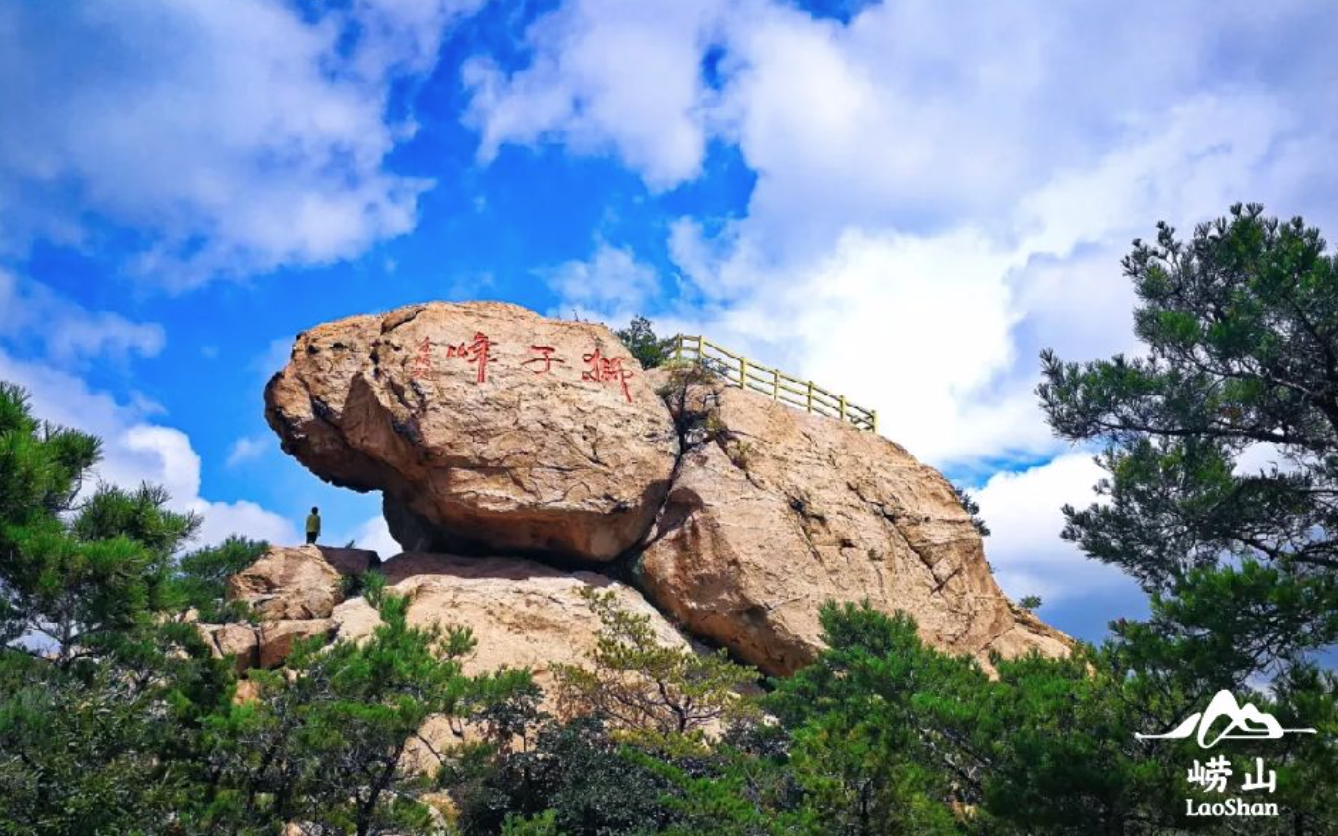
"Sunrise in the east sea is red as fire, lion roar in the valley echoes the waves.” The peak on the east side of the Taiping Palace is called Lion Peak because it is formed like a powerful lion proudly gazing the sea. Lion Peak is high into the clouds, backed up by the mountains and faced by the sea. The open mouth of the lion can hold a dozen people at the same time. The erosion of wind and rain has made jagged bulges inside the jaws of the lion. This is known as rolling cloud of the lion mountain, one of the 12 famous landscapes of Laoshan. 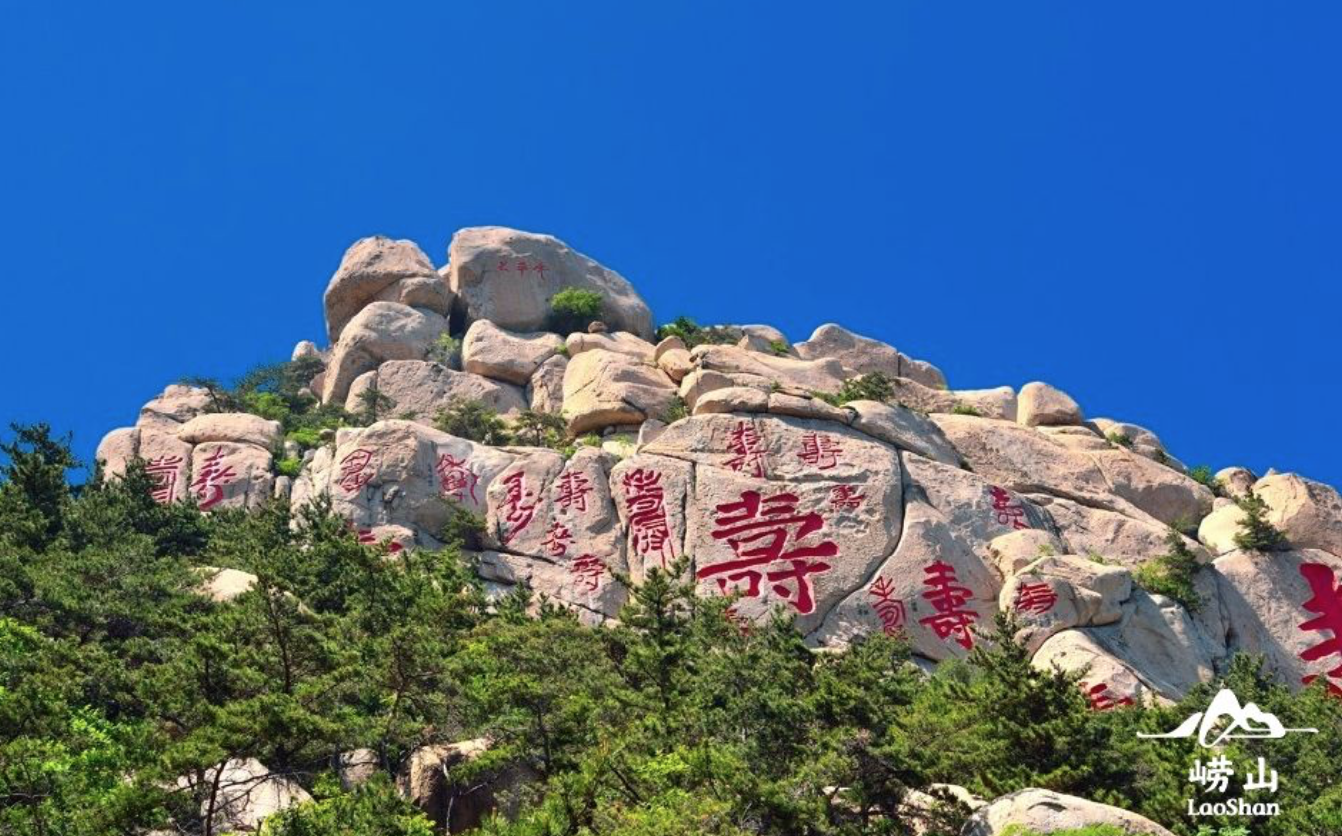
"Happiness--as immense as the eastern sea; Longevity--as vast as the south mountain". The stone walls of Shou Character Peak are engraved with the large and small characters in different fonts by nearly 100 calligraphers in ancient and modern China. The Chinese character “longevity” was written in all kinds of fonts such as official script, seal script, running script, cursive script and regular script. Together, they form a spectacular picture on the large rock walls, which gave the Peak its name of Shouzi Peak. It is also a calligraphy exhibition. Among them, the largest one was written by Ouyang Xun, which is thick and dignified. It is 20 meters high and 16 meters wide. Its mere size added meanings high, long, large and many to the word longevity. Thus, it was praised as the No. 1 in the world by Mr. Shen Peng, a famous contemporary calligrapher. Tourists like to take pictures here and pray for longevity.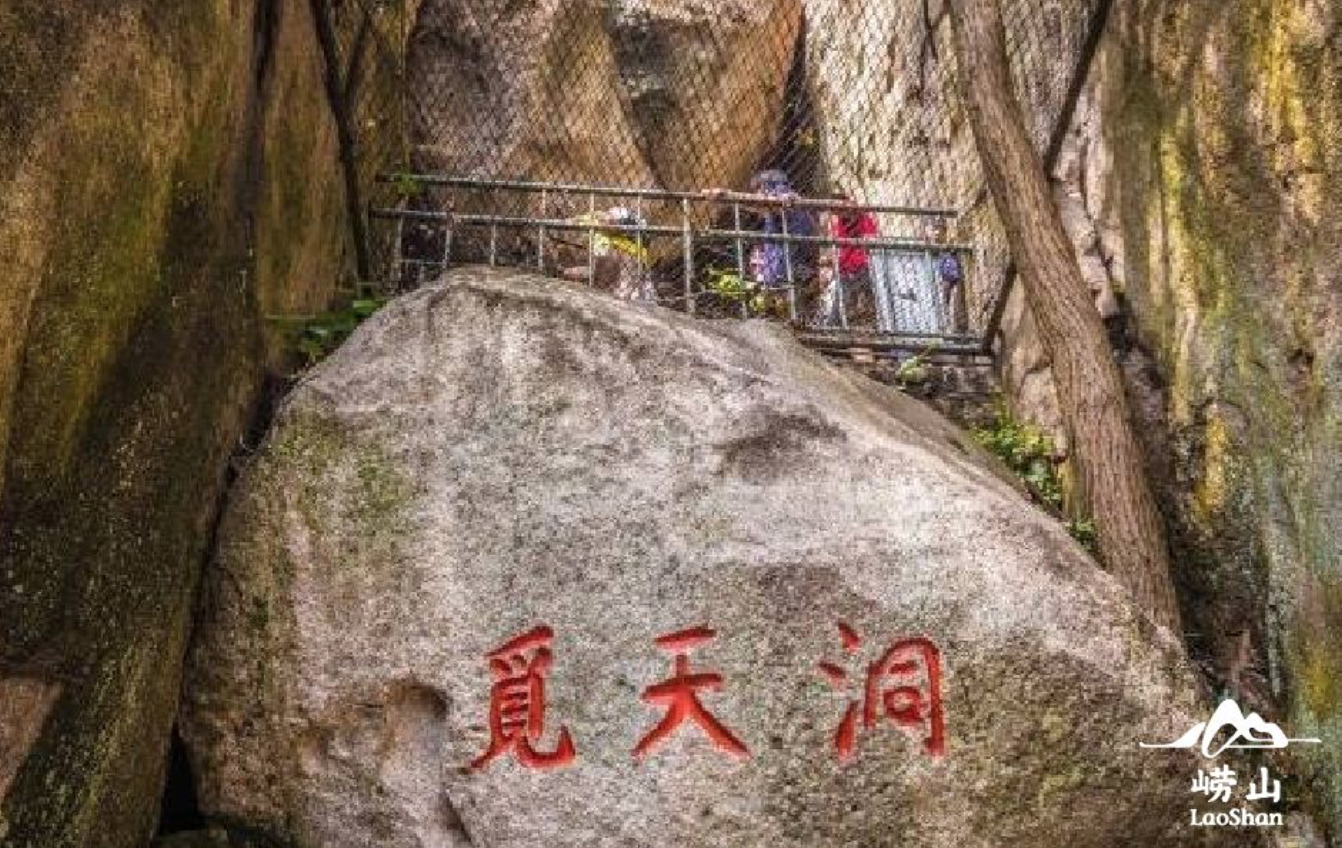
Heaven-seeking Cave is made of many huge stones in the cracks between two large cliffs, forming a natural wonder cave from bottom to top. Its skillfulness beats nature. The cave is over 100 meters high and has its unique features. The cave is divided into five layers from bottom to top. It is winding, strange and even dangerous inside the cave. The inscription outside the cave is inscribed by the famous sculptor Mr. Liu Kaiqu. 
Tianyuan means the Garden of Heaven in the heavenly realm. Tianyuan is the main peak of Shangyuan Mountain. Atop Tianyuan, one can see all of the Yangkou scenic spot at a glance.
Sightseeing route
After entering the scenic spot, there is a cableway on the left (preferable for tourists in hurry or those with weaker physical strength) that takes 25 minutes per round trip and stop near Shouzi Peak. If it's a one-way trip, it's recommended to walk up and then take the cableway down, you can see the sea view on the cableway; on the right side, it's a walking tour route, the whole route is: Taiping Palace - Lion Peak - Youlong Cave - Xiantao - Shouzi Peak - Heaven-seeking Peak - Tianyuan. The whole tour lasts about 2-3 hours.
In the colored mist and haze of the Yangkou scenic spot, the peaks stand steep as if contending for beauty. Under the cover of green pines and bamboos, Taiping Palace and Guandi Temple, the "sea palace”, hide themselves in the embrace of waters and plants. There are many unique stone caves hidden beneath the cliffs, including the Bailong Cave, which contains poems written by Qiu Chuji, a famous Taoist priest of the Yuan Dynasty; the Youlong Cave, a place where Taoist priests practiced meritorious deeds in past dynasties; and Baiyun Cave, which is composed of four huge stones: Qinglong, Baihu, Zhuque and Xuanwu. Appreciate the spectacle of "Lion Peak Reaching the Sun" atop the Lion Peak and the fascinating "rolling cloud of the lion mountain" below. The distant Yangkou Bay's golden beach is like a golden "crescent moon", which is more brilliant against the blue sea and sky. It is winding, strange and even dangerous inside the Heaven-seeking Cave, truly a place of wander, secludedness, adventurousness and fun. Atop Tianyuan, one can see all of the Yangkou scenic spot at a glance. Looking around the Shangyuan Mountain, it has Pingding Gu to the east; the Buddha and Bajie Stone to the south; the Dhatarattha from the east guard here; and it has the Yangkou Bay to the north, the crescent golden beach is as dreamy as a fairyland. By now, we have no regret for our first trip to the No. 1 Famous Mountains on the Sea.



